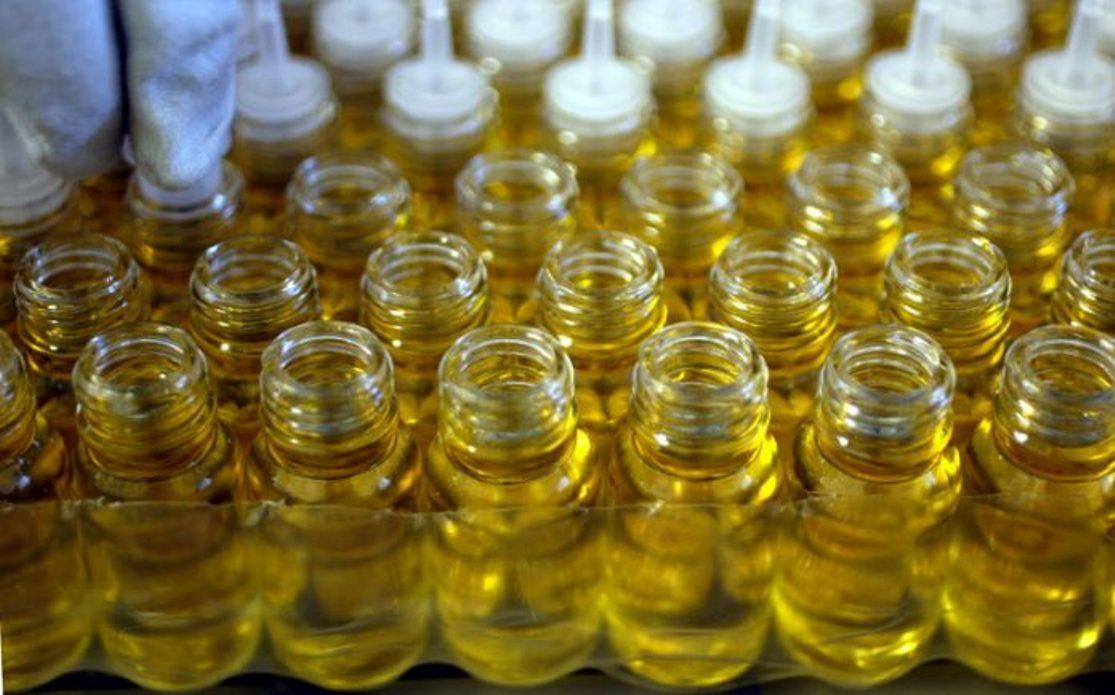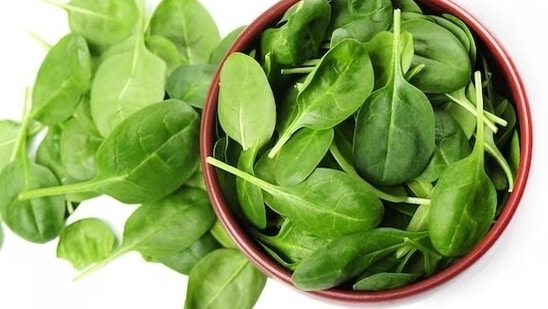Lemongrass: Nature’s Secret Weapon Against Bacteria and Fungi
In the grand tapestry of nature, where countless species vie for survival and evolution constantly refines its arsenal, certain plants emerge not just as providers of sustenance or beauty, but as silent guardians, armed with an intricate chemistry honed over millennia. Among these unsung heroes, Cymbopogon citratus, commonly known as lemongrass, stands tall – a deceptively humble grass whose aromatic essence conceals a formidable power. Beyond its culinary charm and refreshing fragrance, lemongrass has revealed itself, through the lens of modern science, to be a sophisticated secret weapon, an ancient ally in the ceaseless battle against pathogenic bacteria and fungi.
This is not merely a tale of a pleasant aroma; it is the story of a botanical powerhouse, a deep dive into the intricate molecular mechanisms that allow lemongrass to dismantle microbial threats, offering a beacon of hope in an era increasingly shadowed by antimicrobial resistance. For the discerning mind, knowledgeable in the nuances of biological warfare waged at the cellular level, the narrative of lemongrass unfolds as a compelling testament to nature’s profound wisdom.
The Verdant Origin: From Ancient Fields to Modern Labs
The journey of lemongrass begins in the tropical and subtropical regions of Asia, Africa, and Australia. Its history is deeply interwoven with human civilization, cultivated for centuries not just as a culinary staple – lending its distinctive lemony-citrus notes to curries, teas, and broths – but more significantly, as a cornerstone of traditional medicine. From Ayurvedic practices in India to Chinese herbal remedies and folk medicine across Southeast Asia, lemongrass infusions, poultices, and inhaled vapors were employed to treat fevers, digestive ailments, respiratory infections, and skin conditions. Its aromatic smoke was even used as a natural insect repellent, a testament to its multifaceted utility.
Botanically, lemongrass belongs to the Poaceae family, a vast group that includes cereals and other grasses. While several Cymbopogon species exist, Cymbopogon citratus (West Indian lemongrass) and Cymbopogon flexuosus (East Indian lemongrass) are the most commonly utilized for their essential oils, though their chemical compositions exhibit subtle variations. It is from the aerial parts of this perennial grass – its leaves and stalks – that the precious essential oil is extracted, typically through steam distillation, capturing the very essence of its antimicrobial prowess.
The transition from anecdotal traditional use to scientific scrutiny began in earnest in the 20th century, spurred by the growing interest in natural products and the increasing challenges posed by synthetic drug resistance. Researchers, intrigued by the persistent efficacy of lemongrass in traditional healing, embarked on a quest to unravel its chemical secrets, setting the stage for its emergence as a formidable natural antimicrobial agent.
Deconstructing the Arsenal: The Molecular Maestros of Lemongrass
The true power of lemongrass lies within its complex chemical composition, particularly its essential oil. This volatile liquid is a symphony of organic compounds, each playing a role, often synergistically, in orchestrating its antimicrobial effects. While hundreds of compounds can be identified, a select few stand out as the principal architects of its defensive capabilities.
The undisputed star of the lemongrass essential oil is citral, a monoterpene aldehyde. In fact, citral often constitutes 70-85% of the oil’s total composition, dictating much of its characteristic aroma and, crucially, its biological activity. Citral exists as two geometric isomers: geranial (or trans-citral) and neral (or cis-citral). Both are potent, though geranial is generally considered to be slightly more active. Citral’s broad-spectrum antimicrobial efficacy against a wide array of bacteria and fungi has been extensively documented, making it a focal point of research.
Beyond citral, other significant compounds contribute to the oil’s overall potency:
- Geraniol: Another monoterpene alcohol, geraniol, is a precursor to citral and possesses its own distinct antimicrobial and insecticidal properties. It is also found in other essential oils like rose and palmarosa.
- Myrcene: A monoterpene hydrocarbon, myrcene contributes to the oil’s aroma and has demonstrated analgesic and anti-inflammatory effects, potentially enhancing the overall therapeutic profile.
- Limonene: A cyclic monoterpene, limonene is widely recognized for its citrusy scent and also exhibits antimicrobial and antioxidant properties.
- Linalool: A monoterpene alcohol, linalool is known for its floral aroma and sedative effects, alongside its mild antimicrobial action.
- Citronellol and Citronellal: While more prominent in citronella oil (another Cymbopogon species), these compounds can also be present in smaller quantities in lemongrass oil and contribute to its insect-repellent and antimicrobial properties.
The beauty of nature’s design is rarely found in isolated compounds but rather in their intricate interactions. The diverse array of monoterpenes, sesquiterpenes, aldehydes, and alcohols within lemongrass essential oil creates an "entourage effect." This synergy means that the whole essential oil is often more potent than any single isolated component, even citral, suggesting that these compounds work together in a coordinated attack, targeting multiple microbial pathways simultaneously. This complexity also makes it more difficult for microbes to develop resistance, a significant advantage over single-target synthetic drugs.
Furthermore, beyond the volatile essential oil, lemongrass also contains non-volatile phytochemicals such as flavonoids (e.g., luteolin, quercetin), phenolic acids (e.g., caffeic acid, chlorogenic acid), and tannins. While their direct antimicrobial contribution might be less pronounced than the essential oil, they contribute to the plant’s overall antioxidant, anti-inflammatory, and immune-modulating properties, further supporting the body’s natural defenses against infection.
The Battleground: Unveiling the Mechanisms of Antimicrobial Action
For the knowledgeable audience, understanding how lemongrass essential oil, and particularly citral, wages war on microorganisms is key to appreciating its potential. The mechanisms are multifaceted, often targeting critical cellular structures and metabolic processes essential for microbial survival and proliferation.
The Bacterial Offensive: Disrupting Cellular Integrity and Metabolism
Bacteria, both Gram-positive and Gram-negative, rely on a delicate balance of cellular integrity and metabolic efficiency. Lemongrass compounds launch a sophisticated assault on these vital systems:
-
Cell Membrane Disruption: This is arguably the primary and most well-understood mechanism. Bacterial cell membranes, composed of a phospholipid bilayer, maintain cellular homeostasis by regulating the passage of substances and housing critical enzymes. The hydrophobic nature of terpenes like citral allows them to readily intercalate into this lipid bilayer. This insertion increases membrane fluidity, compromises its structural integrity, and creates pores or channels.
- Permeability Alteration: The increased permeability leads to the leakage of vital intracellular components, including ions (K+, H+), ATP (adenosine triphosphate – the cell’s energy currency), nucleic acids (DNA, RNA), and proteins. This efflux of essential molecules quickly depletes the cell’s resources and disrupts osmotic balance, leading to cell death.
- Enzyme Inhibition: Membrane-bound enzymes, crucial for processes like ATP synthesis (e.g., ATPases) and electron transport in respiration, are particularly vulnerable. Their disruption starves the cell of energy.
- Proton Motive Force Collapse: The essential oil components can also interfere with the proton motive force (PMF) across the bacterial membrane. PMF is vital for ATP synthesis and active transport; its dissipation leads to energy collapse and inhibits cellular functions.
-
Enzyme Inhibition: Beyond membrane-bound enzymes, lemongrass compounds can also directly inhibit various intracellular enzymes crucial for bacterial metabolism. For instance, studies suggest interference with enzymes involved in DNA replication, protein synthesis, and general metabolic pathways, further crippling the bacterial cell’s ability to grow and reproduce.
-
DNA/RNA Synthesis Inhibition: While less direct than membrane damage, some research indicates that higher concentrations of lemongrass compounds might interfere with the synthesis of genetic material, preventing the bacteria from replicating their DNA or transcribing RNA necessary for protein production.
-
Biofilm Disruption: Perhaps one of the most significant contributions of lemongrass in the fight against bacteria is its ability to combat biofilms. Biofilms are complex communities of microorganisms encased in an extracellular polymeric substance (EPS) matrix, adhering to surfaces. They are notoriously resistant to antibiotics and immune responses, posing a major challenge in clinical settings (e.g., chronic wound infections, medical device-associated infections).
- Anti-adhesion: Lemongrass essential oil can inhibit the initial attachment of bacteria to surfaces, preventing biofilm formation.
- Quorum Sensing Inhibition: Bacteria in biofilms communicate through chemical signals in a process called quorum sensing (QS). Lemongrass compounds have been shown to interfere with QS systems, effectively "blinding" the bacteria and preventing them from coordinating their collective behaviors, such as virulence factor production and matrix synthesis.
- Biofilm Matrix Degradation: Some studies suggest that the essential oil can even penetrate and disrupt existing biofilm matrices, making the embedded bacteria more susceptible to other antimicrobial agents or host defenses.
The Fungal Foe: Targeting Ergosterol and Cellular Respiration
Fungi, including yeasts and molds, present a distinct challenge due to their eukaryotic cellular structure, which shares more similarities with human cells than bacteria do, making selective toxicity difficult for synthetic antifungals. However, lemongrass essential oil demonstrates potent antifungal activity, primarily by targeting fungal-specific structures and pathways:
-
Ergosterol Synthesis Inhibition: Analogous to cholesterol in mammalian cells, ergosterol is the primary sterol in fungal cell membranes, crucial for maintaining membrane fluidity, integrity, and the function of membrane-bound enzymes. Lemongrass compounds, particularly citral and geraniol, are believed to interfere with the biosynthesis of ergosterol. By inhibiting key enzymes in the ergosterol pathway (e.g., lanosterol 14-alpha-demethylase, similar to azole antifungals), they deplete ergosterol levels, leading to a compromised, leaky fungal cell membrane. This results in the same consequences as in bacteria: leakage of intracellular contents and ultimately, cell death.
-
Mitochondrial Dysfunction: Fungi, like human cells, rely on mitochondria for energy production through cellular respiration. Lemongrass compounds can induce mitochondrial dysfunction in fungal cells, disrupting the electron transport chain and oxidative phosphorylation. This leads to a severe energy deficit, impairing growth and viability.
-
Spore Germination Inhibition: Many pathogenic fungi reproduce via spores. Lemongrass essential oil has been shown to inhibit the germination of fungal spores, thereby preventing the spread and proliferation of fungal infections.
-
Mycotoxin Reduction: Indirectly, by inhibiting the growth of mycotoxin-producing fungi (e.g., Aspergillus species), lemongrass can reduce the production of these harmful toxins, which pose significant health risks in contaminated food and feed.
The effectiveness of lemongrass against a broad spectrum of pathogens – including notorious bacteria like Escherichia coli, Staphylococcus aureus (including MRSA), Salmonella enterica, and Pseudomonas aeruginosa, as well as fungi like Candida albicans, Aspergillus niger, and dermatophytes – has been validated in numerous in vitro studies. Its ability to disrupt multiple microbial targets simultaneously is a key factor in its broad-spectrum activity and its potential to circumvent resistance mechanisms that often plague single-target antimicrobial drugs.
From Lab Bench to Life: Applications and Implications
The scientific understanding of lemongrass’s antimicrobial mechanisms has paved the way for its integration into various practical applications, moving it from the realm of traditional folklore into modern solutions.
Food Preservation: A Natural Guardian
In an era demanding safer and more natural food preservation methods, lemongrass essential oil emerges as a compelling alternative to synthetic additives. Foodborne pathogens (e.g., E. coli, Salmonella, Listeria monocytogenes) pose significant public health risks.
- Antimicrobial Packaging: Lemongrass oil can be incorporated into active packaging materials, edible coatings, or films for fresh produce, meats, and dairy products. This slowly releases the antimicrobial compounds, extending shelf life and inhibiting microbial growth on the food surface.
- Direct Application: It can be directly added to certain food matrices, though sensory considerations (flavor impact) need to be managed. Studies show it can effectively reduce microbial load in various food products, including poultry, fish, and fruits, while also inhibiting spoilage organisms.
- Anti-biofilm on Surfaces: Its ability to prevent and disrupt biofilms is crucial in food processing environments, where surfaces can become reservoirs for persistent pathogens.
Medicine and Healthcare: Aiding the Healing Process
The therapeutic potential of lemongrass in healthcare is vast, ranging from topical treatments to supportive therapies.
- Dermatological Applications: Its potent antifungal activity makes it a natural candidate for treating superficial fungal infections of the skin, nails, and hair, such as athlete’s foot (Tinea pedis), ringworm (Tinea corporis), and onychomycosis. Its antibacterial properties are also beneficial for conditions like acne (Propionibacterium acnes) and other bacterial skin infections. When properly diluted, it can be incorporated into creams, lotions, and balms.
- Oral Hygiene: Lemongrass essential oil can be an effective component in natural mouthwashes and toothpastes. It combats oral pathogens responsible for gingivitis, periodontitis, and dental caries, such as Streptococcus mutans and Porphyromonas gingivalis, by inhibiting their growth and biofilm formation. Its fresh scent also contributes to breath deodorization.
- Respiratory Support: Inhalation of diffused lemongrass essential oil can provide symptomatic relief for respiratory conditions like colds, coughs, and sinusitis, often associated with microbial infections. While its direct antimicrobial action in the respiratory tract requires more research, its anti-inflammatory and decongestant properties are well-documented.
- Emerging Fungal Threats: The rise of multidrug-resistant fungi, such as Candida auris, presents a dire global health challenge. Lemongrass essential oil has shown promising activity against such resistant strains in vitro, offering a potential avenue for combination therapies or novel antifungal development.
- Wound Healing: Beyond its direct antimicrobial action, lemongrass also exhibits anti-inflammatory and antioxidant properties that can support the wound healing process, protecting against infection while reducing inflammation.
- Vector Control: Leveraging its traditional use, lemongrass oil (and its close relative citronella) remains a popular and effective natural insect repellent against mosquitoes, ticks, and other biting insects, helping to prevent vector-borne diseases.
Agriculture: Sustainable Crop Protection
In agriculture, synthetic pesticides and fungicides raise environmental and health concerns. Lemongrass offers an eco-friendly alternative for crop protection.
- Natural Fungicide and Bactericide: It can be used to control plant pathogenic fungi (e.g., powdery mildew, rusts) and bacteria, protecting crops from diseases that reduce yield and quality.
- Biopesticide: Its insecticidal properties can deter or kill agricultural pests, reducing reliance on chemical insecticides.
- Post-Harvest Protection: Applied as a spray or vapor, it can protect harvested produce from spoilage during storage and transport.
Sanitation and Disinfection: Eco-Friendly Cleanliness
The potent antimicrobial properties of lemongrass make it an excellent ingredient for natural cleaning and disinfecting products.
- Surface Cleaners: Incorporated into household and industrial cleaners, it provides effective disinfection against common bacteria and fungi on surfaces, offering a pleasant, natural aroma without harsh synthetic chemicals.
- Air Purifiers: Diffused lemongrass oil can help reduce airborne microbial loads, contributing to cleaner indoor air quality.
Aromatherapy and Wellness: Beyond the Microbes
While this article focuses on its antimicrobial prowess, it is important to acknowledge lemongrass’s role in aromatherapy. Its uplifting and refreshing aroma is known to reduce stress, alleviate anxiety, and promote mental clarity. By reducing stress, it can indirectly support the immune system, further contributing to the body’s ability to ward off infections. Its anti-inflammatory effects also add to its overall wellness benefits.
Navigating the Nuances: Safety, Efficacy, and Future Horizons
Despite its immense potential, the journey of lemongrass from a traditional remedy to a mainstream antimicrobial solution is not without its complexities. A knowledgeable audience understands that "natural" does not automatically equate to "harmless," and rigorous scientific validation is paramount.
Safety and Toxicity Considerations
- Concentration Dependency: The efficacy and safety of lemongrass essential oil are highly concentration-dependent. While low concentrations are generally safe, higher concentrations can lead to adverse effects.
- Skin Irritation and Sensitization: Direct application of undiluted lemongrass essential oil to the skin can cause irritation, redness, or allergic sensitization in some individuals, particularly those with sensitive skin. Proper dilution with a carrier oil (e.g., jojoba, almond) is crucial for topical use.
- Internal Use: Ingesting lemongrass essential oil requires extreme caution. While small amounts are consumed in culinary preparations, therapeutic internal doses of the concentrated oil should only be administered under the guidance of a qualified healthcare professional. High doses can be hepatotoxic (liver toxic) or nephrotoxic (kidney toxic). Pregnant and breastfeeding women, infants, and individuals with certain medical conditions should avoid internal use.
- Drug Interactions: There is a potential for lemongrass essential oil to interact with certain medications, particularly those metabolized by the cytochrome P450 enzyme system in the liver. Consultation with a healthcare provider is essential, especially for individuals on prescription medications.
- Quality and Adulteration: The purity and quality of essential oils vary widely. Adulterated or synthetic versions may lack therapeutic efficacy and can even be harmful. Sourcing from reputable suppliers is critical.
Challenges and Limitations
- Standardization: The chemical composition of lemongrass essential oil can vary significantly depending on the species, geographical origin, cultivation practices, extraction method, and storage conditions. This variability makes standardization challenging and can lead to inconsistencies in therapeutic outcomes.
- Lack of Large-Scale Clinical Trials: While in vitro and animal studies abound, large-scale, placebo-controlled human clinical trials are still needed to fully validate many of the claimed therapeutic benefits and establish optimal dosages and formulations for various conditions.
- Formulation Stability: The volatile nature of essential oil compounds means they can degrade over time or when exposed to light, heat, or air, reducing their efficacy. Developing stable and effective delivery systems (e.g., nanoemulsions, encapsulation) is an ongoing area of research.
- Regulatory Hurdles: The regulatory pathways for natural products, especially essential oils used as medicines, are often less clear-cut than for synthetic drugs, impacting their widespread adoption in conventional healthcare.
Future Horizons and Research Directions
The future of lemongrass as an antimicrobial agent is bright, with several exciting avenues for research and development:
- Nanotechnology: Encapsulating lemongrass essential oil in nanoparticles or nanoemulsions can enhance its stability, improve targeted delivery, increase bioavailability, and reduce potential toxicity by allowing for lower effective doses.
- Combination Therapies: Exploring the synergistic effects of lemongrass essential oil with conventional antibiotics or antifungals could be revolutionary in combating drug-resistant pathogens. The essential oil might act as an efflux pump inhibitor, enhancing the efficacy of existing drugs, or as a sensitizer, making resistant microbes susceptible again.
- Precise Molecular Pathway Elucidation: Deeper proteomic and genomic studies are needed to precisely map out all the molecular targets and pathways affected by lemongrass compounds in various microorganisms.
- Sustainable Cultivation and Extraction: Optimizing cultivation practices to enhance the yield and quality of essential oil and developing more sustainable and environmentally friendly extraction methods are crucial for large-scale production.
- Development of Novel Drug Leads: Isolating and modifying specific compounds from lemongrass, or designing synthetic analogs, could lead to the development of new, potent antimicrobial drugs with improved safety profiles.
Conclusion: A Testament to Nature’s Enduring Wisdom
The story of lemongrass is a profound narrative of nature’s enduring power and sophistication. From its humble origins as a culinary herb and traditional medicine in ancient cultures, it has journeyed into the modern scientific spotlight, revealing itself as a formidable secret weapon against the unseen microbial world. Its complex essential oil, rich in compounds like citral, geraniol, and myrcene, orchestrates a multi-pronged assault on bacteria and fungi, disrupting cell membranes, inhibiting vital enzymes, dismantling biofilms, and thwarting ergosterol synthesis.
In an age where the specter of antimicrobial resistance looms large, threatening to undo decades of medical progress, the discovery and validation of natural alternatives like lemongrass offer a beacon of hope. Its applications span food preservation, medicine, agriculture, and sanitation, promising sustainable and effective solutions to pervasive challenges.
Yet, its story is far from complete. While scientific inquiry has unveiled much, the full potential of lemongrass remains to be harnessed through rigorous research, responsible application, and a deep respect for the intricate balance of nature. As we continue to face evolving microbial threats, the unassuming blades of lemongrass serve as a powerful reminder: sometimes, the most potent solutions are found not in laboratories, but in the verdant, ancient wisdom of the natural world, patiently waiting for us to understand and appreciate their profound secrets. Lemongrass is not just a plant; it is a silent, aromatic guardian, a testament to nature’s genius, and a powerful ally in humanity’s ongoing quest for health and well-being.







